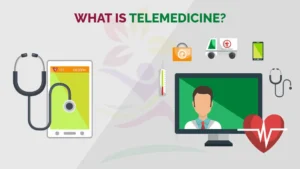The healthcare landscape has undergone a dramatic transformation as virtual care solutions reshape how patients access medical services. Virtual care represents a comprehensive approach to healthcare delivery that leverages digital technologies to provide clinical services remotely, eliminating traditional barriers of time and distance. These solutions encompass a broad spectrum of services, from video consultations and remote patient monitoring to digital therapeutics and AI-powered diagnostic tools. As healthcare systems worldwide grapple with increasing demand, aging populations, and resource constraints, virtual care emerges as a critical component in creating more accessible, efficient, and patient-centered healthcare delivery models.
The Digital Health Revolution
Digital health has evolved from a niche concept to a mainstream healthcare delivery method over the past two decades. The journey began with simple telemedicine calls and has expanded into sophisticated platforms that integrate electronic health records, artificial intelligence, and real-time monitoring capabilities. The COVID-19 pandemic accelerated this evolution, forcing healthcare providers to rapidly adopt virtual care technologies to maintain continuity of care while ensuring patient and provider safety.
This acceleration compressed what might have been a decade-long adoption timeline into mere months, fundamentally changing how both providers and patients view healthcare delivery. The result is a more mature, robust virtual care ecosystem that continues to expand beyond pandemic-driven necessities.
Transformative Benefits for Healthcare
Virtual care solutions offer compelling advantages that extend far beyond convenience. Patient access to healthcare improves dramatically, particularly for those in rural or underserved areas where specialist care may be hours away. The elimination of travel time and associated costs makes healthcare more affordable and accessible for many patients.
From a provider perspective, virtual care enables more efficient resource utilization, allowing physicians to see more patients while reducing overhead costs associated with physical facilities. Quality of care often improves through better care coordination, as digital platforms facilitate seamless information sharing between providers. Additionally, virtual care supports preventive medicine by enabling continuous monitoring and early intervention, potentially reducing hospital readmissions and emergency department visits.
Navigating Implementation Challenges
Despite significant benefits, virtual care adoption faces several obstacles that healthcare organizations must address thoughtfully. Technology barriers remain significant, particularly for elderly patients or those with limited digital literacy. Internet connectivity issues can compromise care quality, especially in rural areas where broadband access remains inconsistent.
Regulatory frameworks struggle to keep pace with technological advances, creating uncertainty around licensing, reimbursement, and liability issues across state and international boundaries. Privacy and security concerns are paramount, as virtual platforms must protect sensitive health information while maintaining user-friendly interfaces. Healthcare providers also face challenges in maintaining the human connection that defines quality healthcare relationships, requiring new skills in virtual communication and empathy.
Emerging Trends and Technologies
Several exciting technological developments are shaping the future of virtual care. Artificial intelligence and machine learning are enhancing diagnostic capabilities, enabling virtual platforms to provide more accurate preliminary assessments and treatment recommendations. Internet of Things devices are expanding remote monitoring capabilities, allowing continuous tracking of vital signs, medication adherence, and lifestyle factors.
Augmented and virtual reality technologies are creating immersive treatment experiences, particularly valuable for mental health therapy and rehabilitation services. Integration with wearable devices provides real-time health data, enabling proactive interventions before conditions deteriorate. Blockchain technology promises to enhance security and interoperability, while 5G networks will support more sophisticated virtual care applications requiring high-bandwidth, low-latency connections.
Building Tomorrow’s Healthcare System
Virtual care solutions represent more than a technological upgrade—they signal a fundamental shift toward patient-centered, accessible healthcare delivery. As these technologies mature and become more integrated into standard care protocols, we can expect to see improved health outcomes, reduced costs, and greater patient satisfaction.
The success of virtual care depends on carefully combining it with traditional care methods, making sure that technology supports rather than takes away from the important human aspects of healing. Healthcare organizations that embrace virtual care while addressing implementation challenges will be best positioned to meet evolving patient expectations and deliver high-quality care in an increasingly digital world.
FAQs
1. What types of medical conditions can be treated through virtual care?
Virtual care is effective for many conditions, including routine check-ups, mental health counseling, chronic disease management, dermatological consultations, and follow-up appointments. However, conditions requiring physical examination, emergency situations, or hands-on procedures still need in-person care.
2. How secure is virtual care technology?
RReputable virtual care platforms utilize encryption, secure data transmission, and HIPAA-compliant infrastructure to safeguard patient information. However, patients should verify that their chosen platform meets healthcare privacy standards and use secure internet connections.
3. Will insurance cover virtual care services?
Most major insurance providers now cover virtual care services, particularly after expanded coverage during the pandemic. Coverage varies by provider and service type, so patients should verify benefits with their insurance company before scheduling virtual appointments.
4. What technology do I need for virtual care appointments?
Basic virtual care requires a smartphone, tablet, or computer with an internet connection, camera, and microphone. Some specialized services may require additional devices like blood pressure monitors or pulse oximeters, which are often provided by healthcare providers.
5. How does virtual care quality compare to in-person visits?
Studies show that virtual care can be equally effective for many conditions, with high patient satisfaction rates. The key is appropriate patient selection and ensuring virtual platforms support thorough communication between patients and providers.




